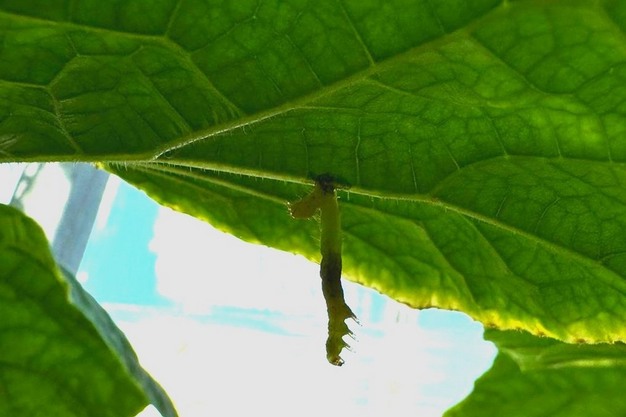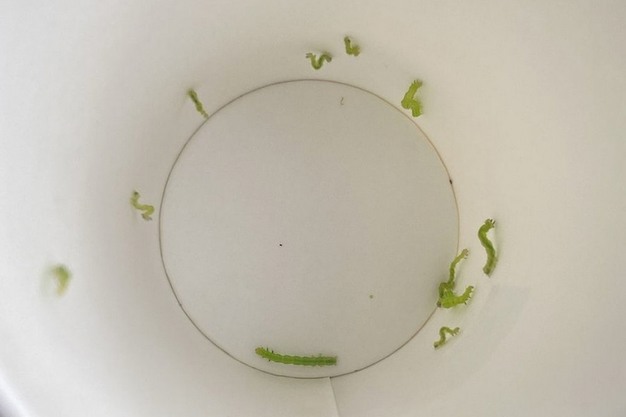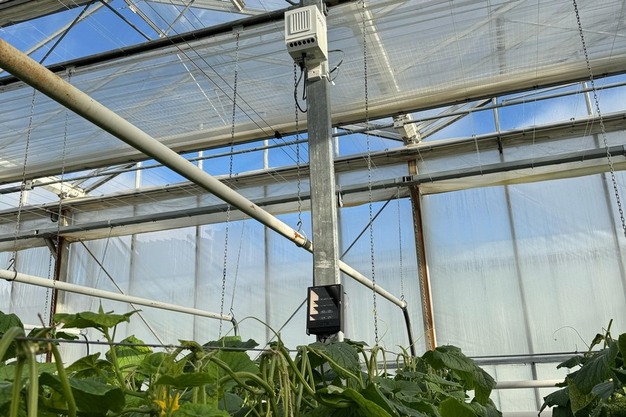At Bosch Komkommers in Berkel en Rodenrijs, Daan van den Bosch is responsible for crop protection. In the spring of 2024 he decides to try something new: PATS-C. This is an advanced camera system that monitors moths at night, particularly the Tomato looper (Chrysodeixis chalcites). Not a luxury, as this pest can cause serious damage in cucumber cultivation. At first, it's just the leaves that are eaten, but with increasing pressure, young fruits are also affected, rendering them unsellable.
Daan is accustomed to keeping a keen eye out for signs of pest pressure. However, caterpillars often become visible only when it's already too late. He understands that in biological crop protection, timing is crucial. Tools like Bt (Bacillus thuringiensis) and parasitic wasps can be effective, but only if you know precisely when the caterpillars are hatching. The younger the caterpillars, the more effective the treatment. Interventions at a later stage are less ideal and can potentially harm beneficial insects in the greenhouse.
 © Bosch KomkommersTomato looper caterpillar successfully controlled with a Bt application
© Bosch KomkommersTomato looper caterpillar successfully controlled with a Bt application
From the very first moment that PATS-C is operational in the greenhouse, Daan notices a difference. Even though he still doesn't see anything himself, the system is already detecting adult moth activity. What truly convinces him is that, by using flight activity data, he and PATS can accurately predict—within just two days—when the first young caterpillars will appear. The prediction is spot on. Armed with this knowledge, Daan inspects selected plants and, sure enough, there they are: tiny caterpillars, found just in time. He can immediately deploy the appropriate biological agents.
 © Bosch KomkommersThe smallest caterpillars found after the indication from PATS-C
© Bosch KomkommersThe smallest caterpillars found after the indication from PATS-C
As the season progresses, Daan builds trust in the insights from PATS-C. He learns how to interpret the data, understands the patterns, and realizes he can act much more precisely. The two greenhouses, each spanning two hectares, turn out to behave very differently from a biological perspective. They are essentially two separate ecosystems, making individual monitoring essential. That's why Daan decided that in early 2025, both greenhouses will be permanently equipped with a PATS-C system.
"It gives peace of mind," he says. "I now know much sooner what to expect. And I don't have to rely as much on gut feeling."
Every evening and night, PATS-C monitors moth activity. As soon as the first moths are detected, Daan starts counting down: just over ten days later, the first caterpillars can appear. Thanks to this predictability, he can optimize his crop protection, work more preventively, and at the same time, preserve the biological balance.
 © Bosch KomkommersPATS-C in the Bosch Komkommers greenhouse
© Bosch KomkommersPATS-C in the Bosch Komkommers greenhouse
Meanwhile, PATS is working on an automated recommendation model so that growers in the near future can respond even more easily to insights, ultimately needing less experience or guesswork. A future where precision and sustainability go hand in hand. For Daan, that future has already begun.
For more information:
Bosch Komkommers
linkedin.com/company/bosch-komkommers/
